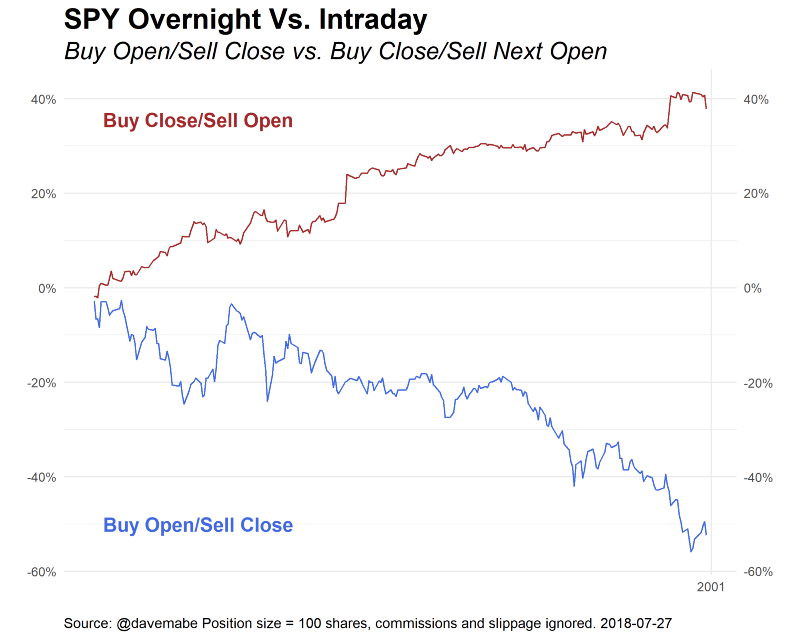In a recent post about the Last-Hour Trading Technique, I mentioned one of my assumptions about the overall market. I think I read somewhere that most of the gains in the SPY are from overnight gaps rather than intraday movement. If true, of course, this implies that there is a lot of money in the overnight gaps and suggests that some swing trading strategies should have a strong position in your trading arsenal.
But I was curious and being someone that likes to verify things rather than blindly follow what the crowd says I thought I’d test this theory to make sure.
What I found surprised me — it’s a little more complicated than a binary yes or no answer.
So I tweeted a poll to see what people thought:
Buy at the open, sell at the close (“intraday”) versus buy at the close, sell at the following open (“overnight”). The responses were pretty soundly in the overnight camp, but not overwhelmingly so.
When I ran some tests I initially thought they confirmed the overnight theory — the final overnight number was solid while the intraday number was basically unchanged. But I decided to look at the equity curves and I see a more complex picture. The difference between the two are negligible since 2009 and, in fact, the intraday system outperformed the overnight system slightly.

Why would this be? I’m not sure, but my main theory is general efficiency argument — over time the markets are getting more efficient.
I’d love to hear other theories in the comments.
Another important takeaway for traders from this exercise: A picture shows so much more than a final number — Always look at the equity curve!